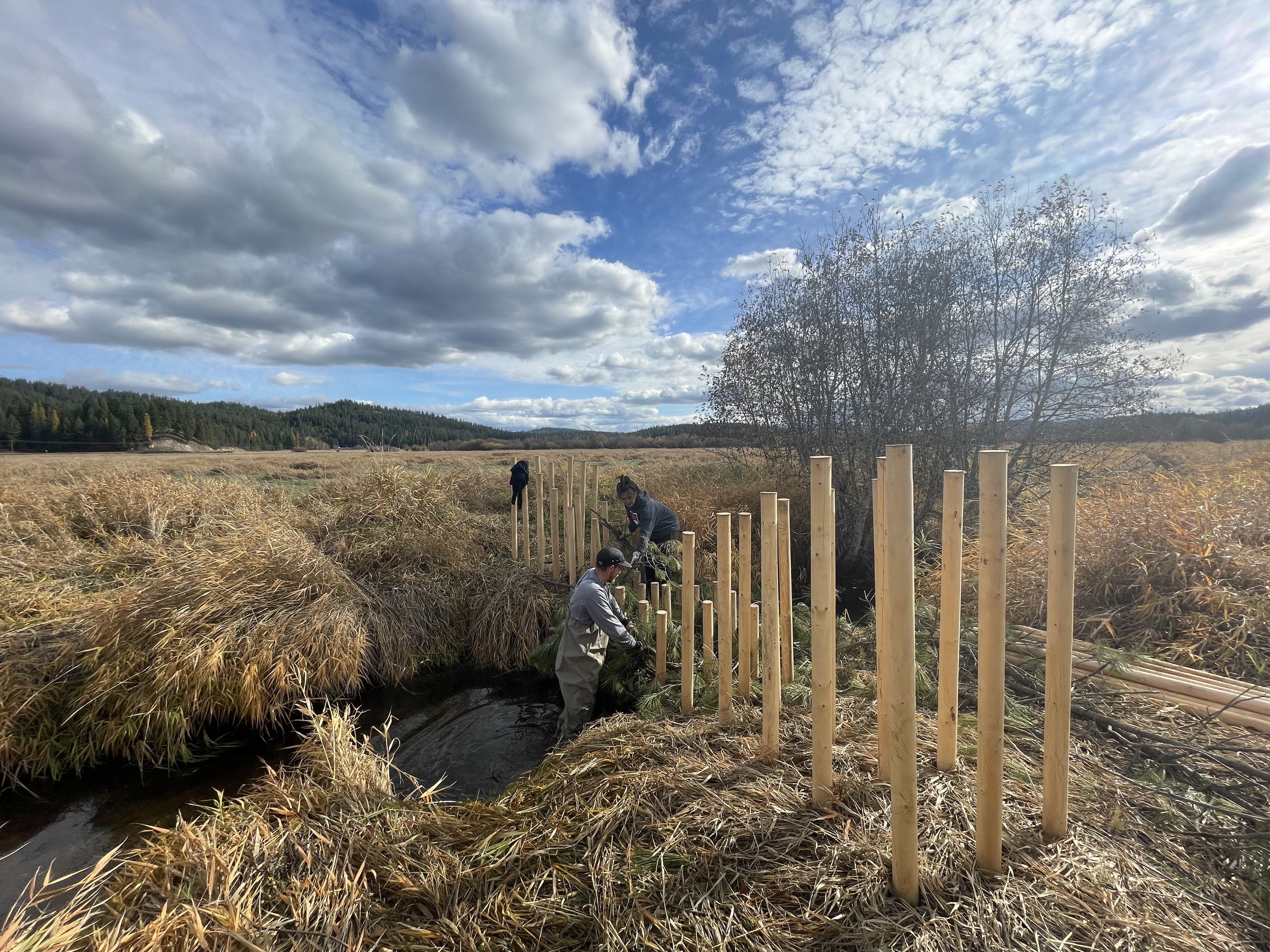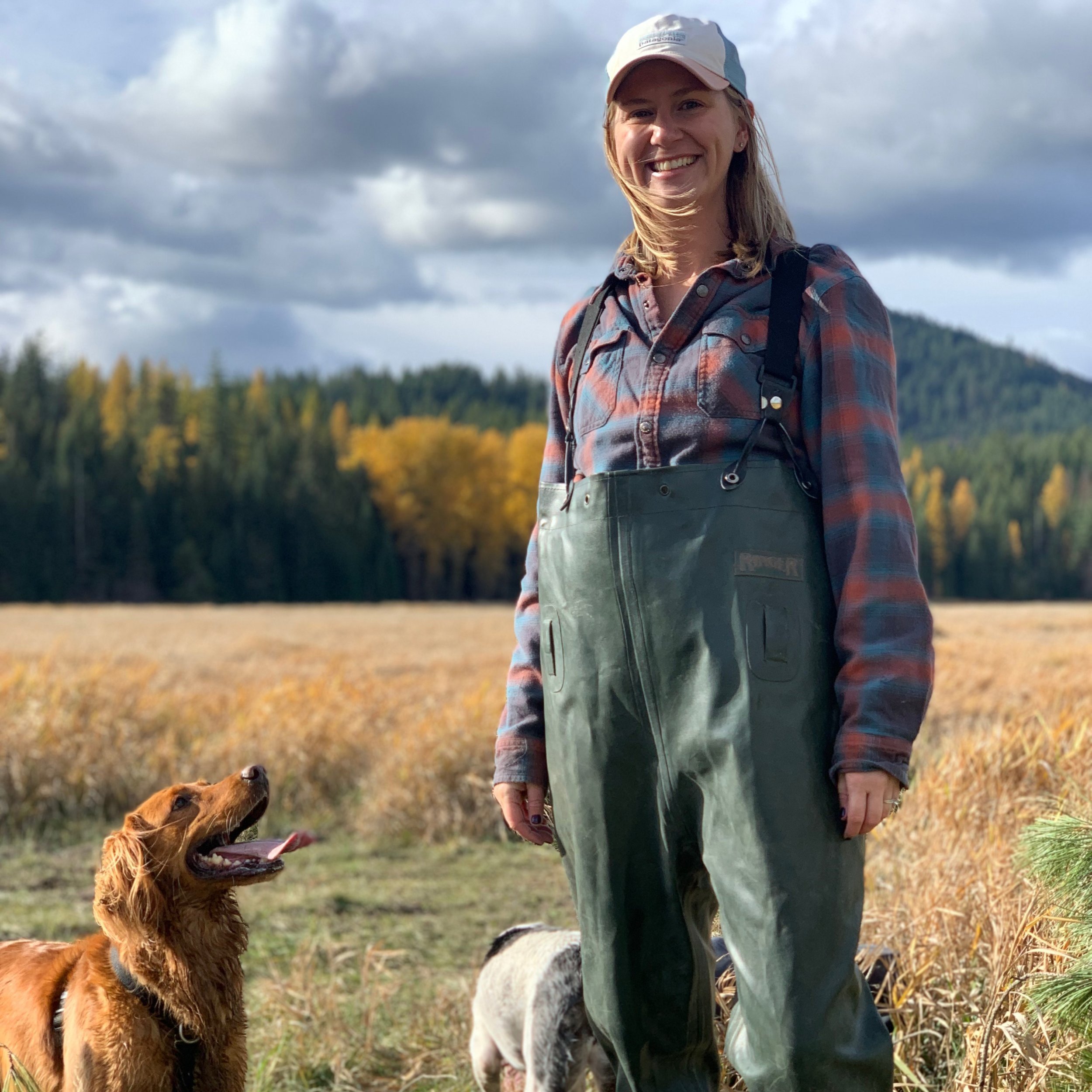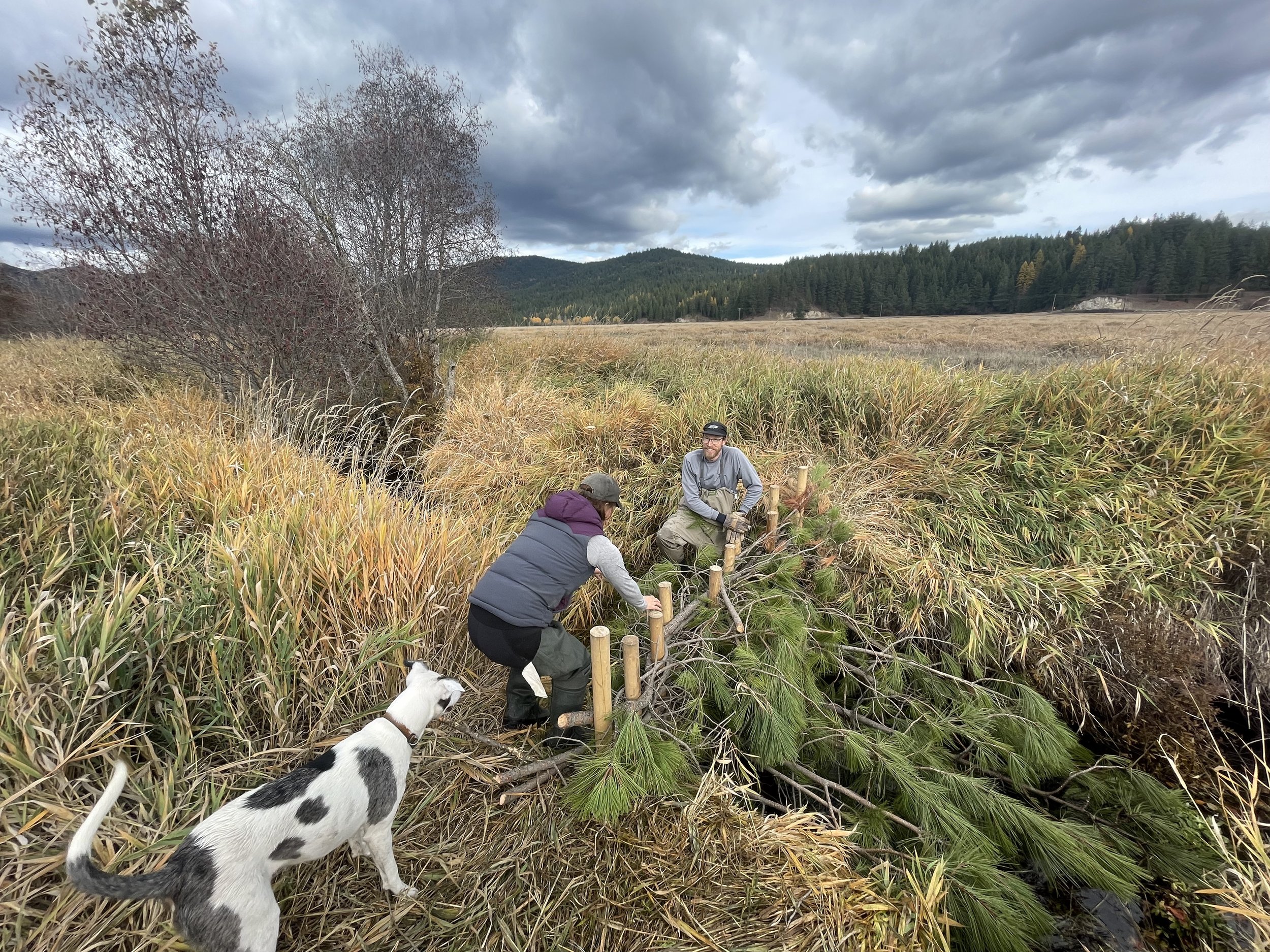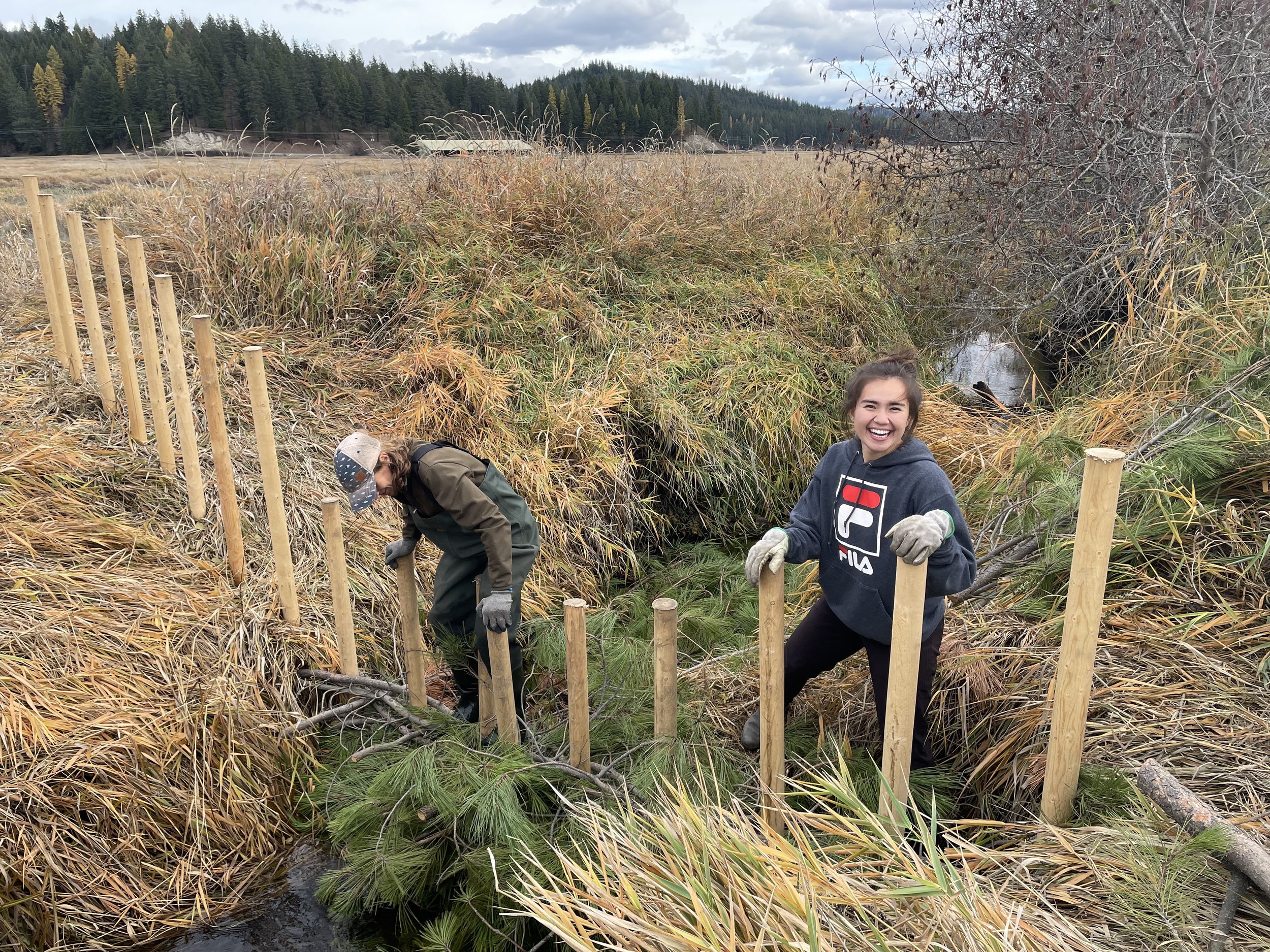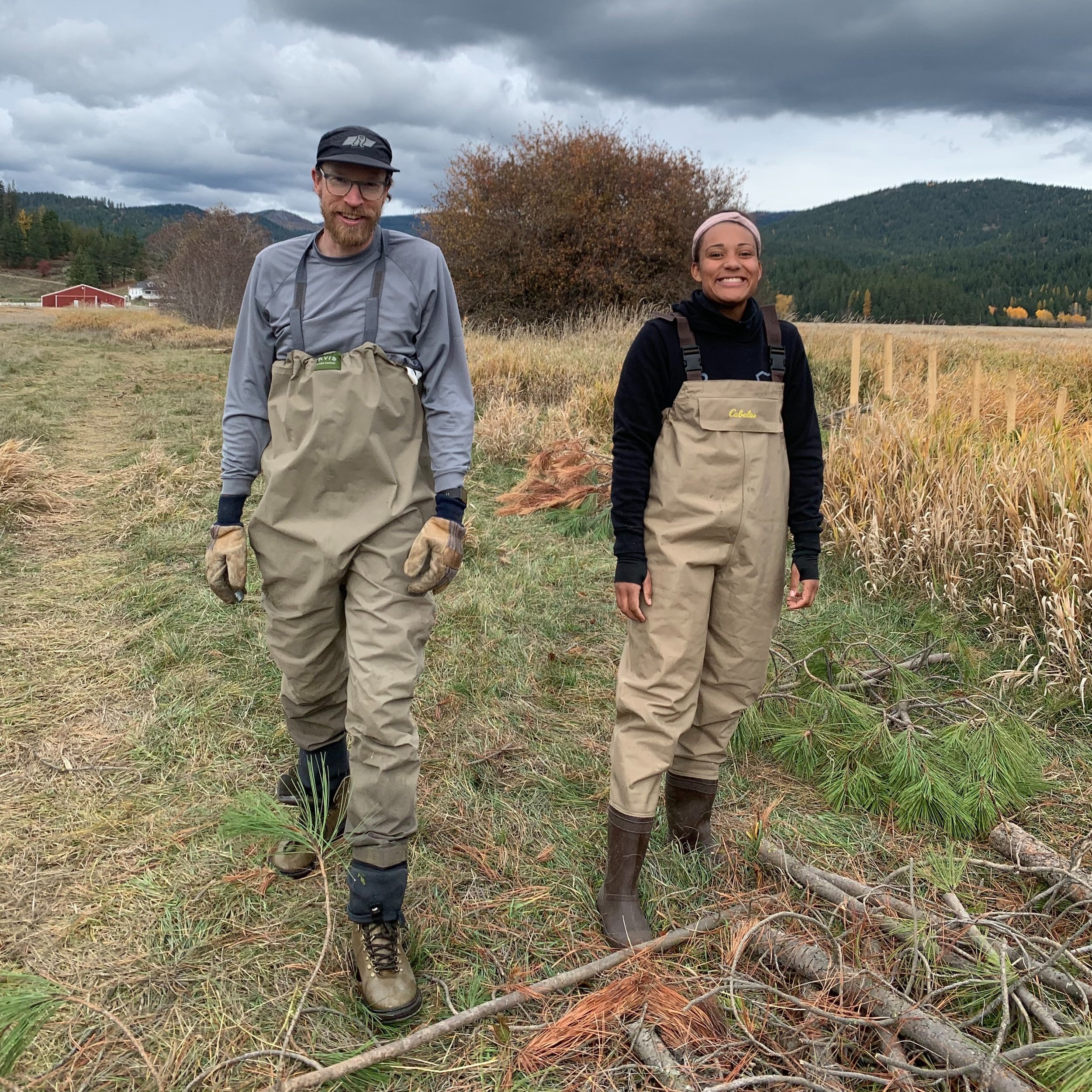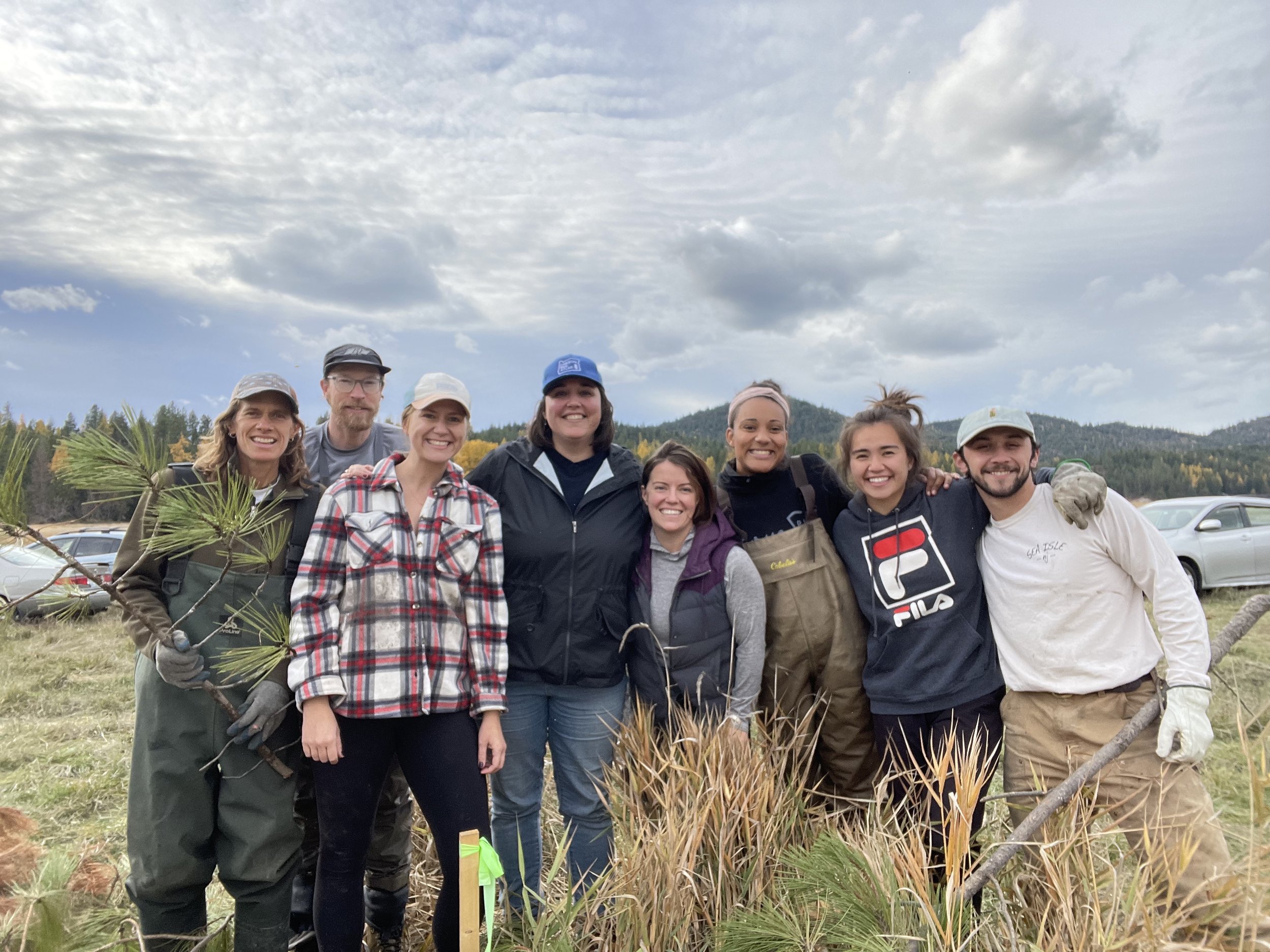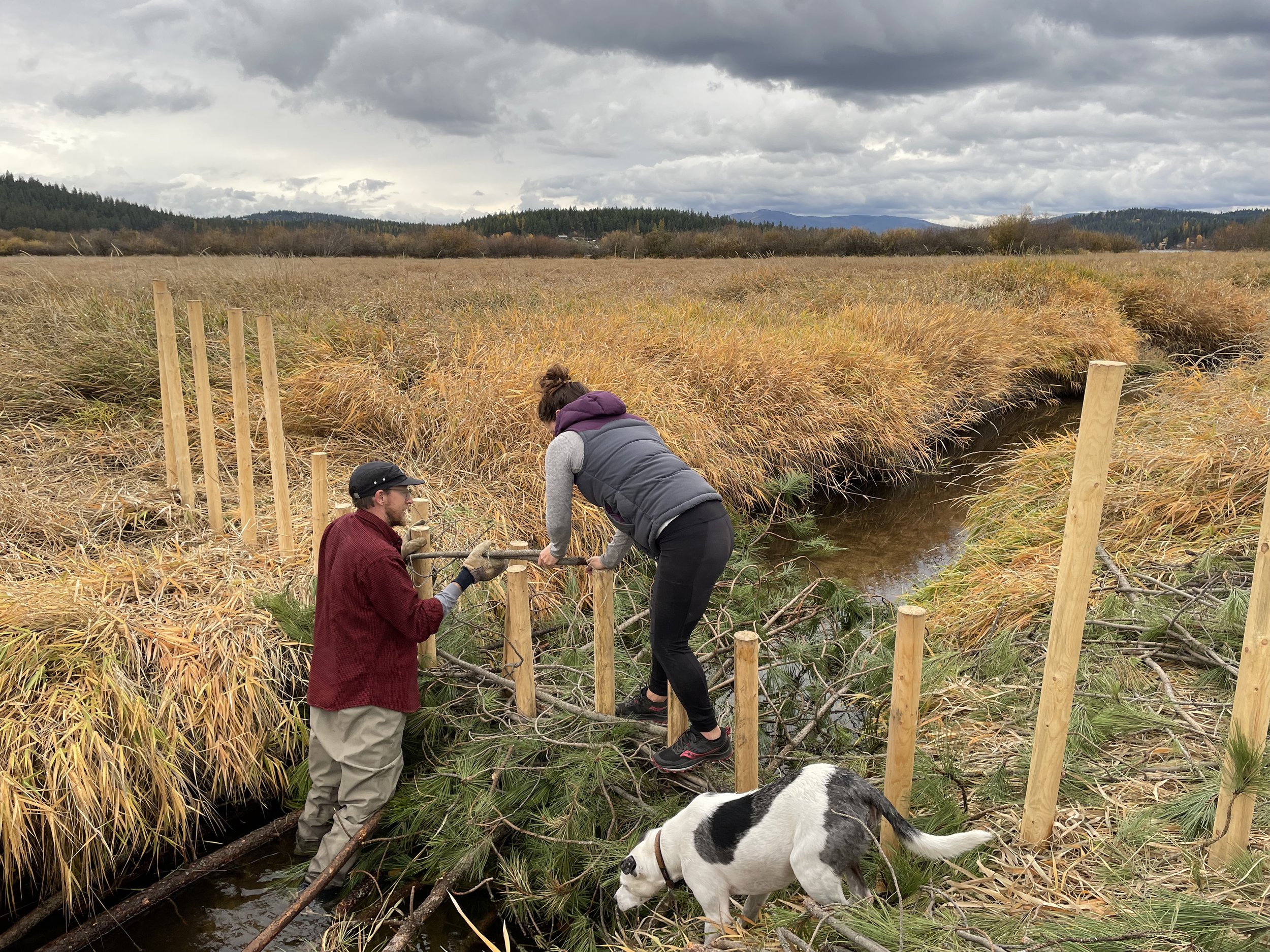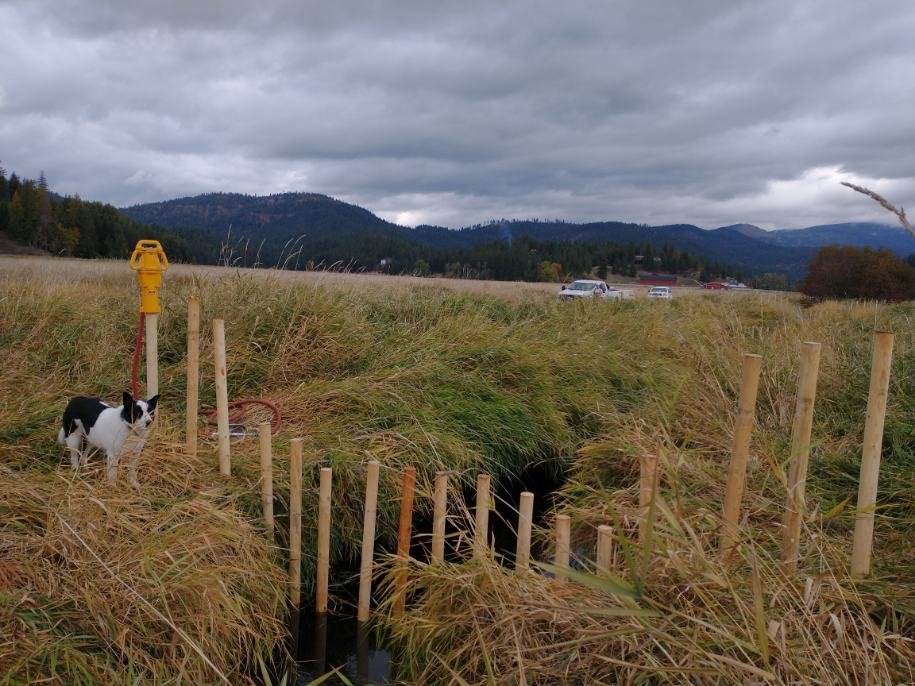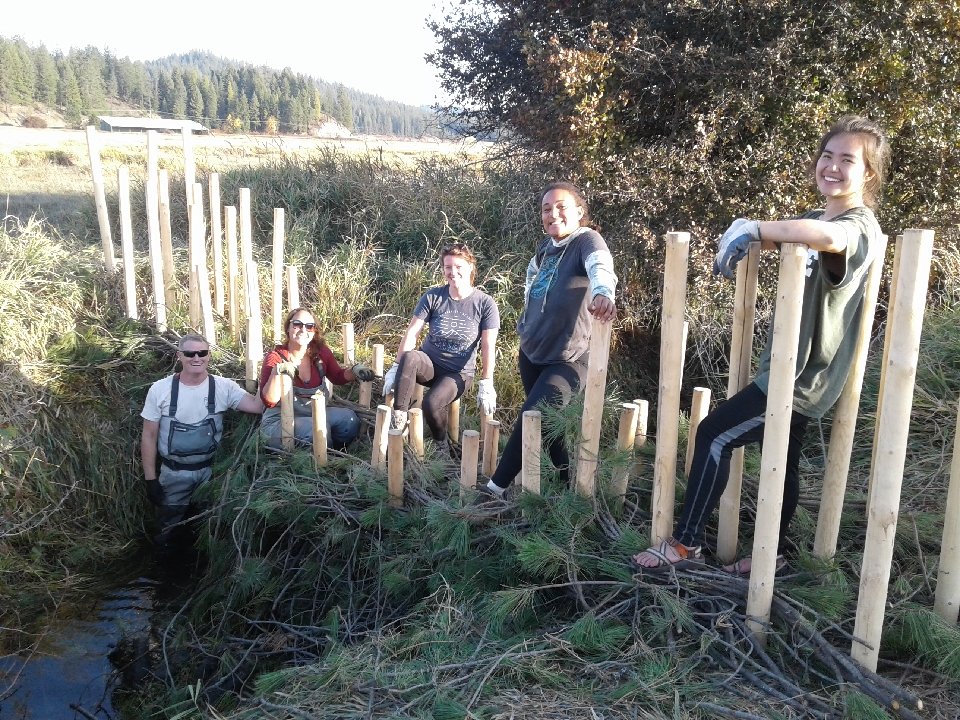By Kat Hall
TLC is excited to announce that - in partnership with the Partners for Fish & Wildlife Program at Turnbull NWR, Gonzaga University, and Spokane County Public Works - we have just completed Phase I of our much-anticipated Thompson Creek beaver dam analog (BDA) project!
Wait. What’s a BDA?
BDAs are light engineering projects designed to mimic beneficial riparian ecosystem processes provided by beavers, such as aquifer storage, creation of wetlands and wildlife habitat, and water quality improvement. Essentially, BDAs are beaver dams built by humans! When strategically-placed, BDAs diminish and deflect erosive forces away from vulnerable streambanks, accumulating sediment behind them and reducing turbidity. BDAs have the effect of raising the water table, expanding natural riparian forest buffer area, and reconnecting an incised channel to its floodplain. In effect, they reduce the overall “flashiness” of degraded streams.
Why Thompson Creek?
Thompson Creek drains into the north end of Newman Lake. Over the past 30 years, deteriorating water quality in Newman Lake as evidenced by high algal growth has sparked community concern. Algae blooms—fueled by excess nutrient inputs (e.g. nitrogen and phosphorus)—reduce water clarity, increase oxygen demand (which can cause fish kills), degrade cold water habitat, and, if toxic blue-green algae is present, can pose a human health risk. Recent studies have indicated that (1) the primary source stimulating algae growth in Newman Lake is the release of phosphorus from sediments during the summer; and (2) the majority of this phosphorus originates in the upper watershed and is transported to Newman Lake via Thompson Creek. We expect our BDAs to trap phosphorus-laden sediment and restrict its entry into Newman Lake. This will ultimately improve the water quality of the lake while creating a healthy, meandering stream system that reconnects with its floodplain, raises the water table, and enhances wildlife habitat.
So we’re trying to be like beavers?
Yes! But our methods are slightly different. In each BDA, we pound untreated lodgepole pine posts (which measure 8’ or 10’ long, have a diameter of 3”, and are tapered at one end) into the stream bed with a pneumatic post driver powered by a small towable air compressor. Posts are typically spaced at 1’ and inserted to a depth of 4-6.5’. We then weave Ponderosa pine and grand fir branches in-between posts, starting from the channel bottom and working our way up…a la underwater basket weaving! Our BDAs are sourced locally and don’t obstruct fish passage. While the posts are temporary and biodegrade over time, they withstand flows long enough accomplish their intended purpose. In total, we’ve pounded over 400 posts and weaved the equivalent of over a dozen truck/trailer loads of brush to create 18 BDAs along a 3,000’ reach of Thompson Creek!
Cool. What’s next?
We’ll maintain and adaptively manage our BDAs through spring runoff each year. We’ve also implemented a sophisticated monitoring protocol which will quantify water storage, sediment, and phosphorus. And come spring, we’ll begin planting a 700’-long, 50’-wide riparian buffer to further enhance habitat and restore the Thompson Creek ecosystem. Stay tuned for opportunities to be part of this…
Many thanks to our partners Brian Walker (USFWS), Dr. Sue Niezgoda (Gonzaga University), Dawson Matthews (Spokane County Environmental Programs), the Newman Lake Property Owners Association, and the Newman Lake Flood Control Zone District for being such an instrumental part of this amazing collaborative project!
Want to read more? Check out the Spokesman Review’s latest article: In hopes of reducing phosphorous in Newman Lake, Gonzaga students, Lands Council install beaver dam analogs.






